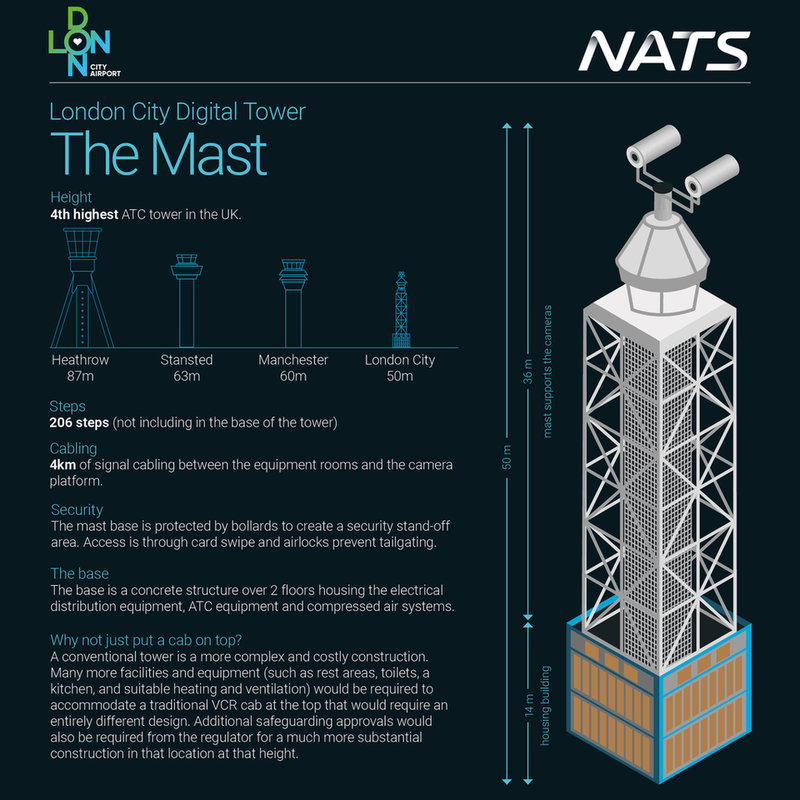ATC
Remote working: the benefits of remote ATC
London City Airport attests to the effectiveness of remote air traffic control towers, having integrated them in 2021. Jasleen Mann finds out how they work and investigates their benefits.
Image: copyright
Remote digital air traffic control (ATC) technology has gone through 10 years of research and development, as well as live trials. The technology is also in use at several airports in Sweden.
London City Airport, however, is considered to be the first major international airport in the world to be fully controlled by a remote digital ATC tower, after adopting the technology last year.
Testing and live trials at London City Airport took place during the lockdown period. It was introduced in anticipation of the increased demand for flying that would inevitably emerge during the summer after lockdown restrictions were lifted.
“We are immensely proud to become the first major international airport to adopt this pioneering technology,” says Alison FitzGerald, COO at London City Airport.
“This investment in smart infrastructure will help us meet future growth in passenger demand, improve air traffic management, and give us enhanced capability as aviation bounces back from the pandemic.”
How does the tower work?
The digital tower incorporates three positions – the ground controller, the air controller, and the coordinator. The controllers use images that are created by 16 HD cameras, which manage air traffic remotely. A panoramic moving image is formed by 14 HD screens, creating a view of the entire airport.
Operational data is then transferred to a custom-built digital tower operations room at the National Air Traffic Services’ (NATS) ATC centre in Swanwick. The digital ATC tower covers all operations to and from London City and some of the air traffic control assets are located there.
The London City Airport digital tower’s mast includes 4km of signal cabling between the equipment rooms and the camera platform. The tower is accessible through the swipe of a card, while airlocks prevent tailgating.
The use of this technology has various safety benefits, such as viewing tools that improve the situational awareness of air traffic controllers, as they will need to spend less time looking at different screens.


In addition to this, the air traffic control towers include object tracking, geo-fencing, and HD zoom. The images can also be augmented with operational data, such as radar tags.
With this technology, it is possible to build the digital tower while running ATC services from the existing tower. As a result, services for passengers continue to run as they usually would and by introducing this technology, issues such as repairs, heating, ventilation, air conditioning, and roof water ingress are removed from the equation.
The cost of the remote ATC tower at London City Airport was around £20m. The investment followed the airport’s completion of new aircraft stands and a full-length parallel taxiway.
FitzGerald adds: “It is also a demonstration of the commitment to innovation in the UK aviation sector and to being at the forefront of defining the future of flight.
“Since going operational, the technology has worked really well and is ready for the expected increase in demand through 2022.”
The benefits of remote ATC
As the use of remote ATC towers grows, the benefits are becoming obvious. There is a growing understanding of digitalisation and its role within the aviation industry, and digital solutions are now being favoured over conventional towers.
Compared to remote ATC, conventional towers are now considered to be more complex and costly in terms of their construction; traditional towers require more support facilities and equipment. By centralising air traffic services, smaller airports may save money in terms of ATC costs and remove the need for subsidies.
In addition to these benefits, there is only a need to deploy services when there is a real demand. Therefore, costs are further reduced, even though the remote tower still assists the airport in running 24/7.
Remote ATC technology is also beneficial for airports where air traffic varies depending on the season and real-time systems (RTS) are available. For example, there are countries that are busier in the winter, with low demand at other times of the year. New business models that support the use of remote ATC towers and RTS will allow airports to make air traffic service purchases based on take-off and landing numbers.
The technology enables the airport to run just as smoothly as a conventional tower would. The same views and information are available to controllers as they would normally experience in a conventional tower, but with remote ATC towers they have the additional benefits of digitalisation.
All images credit: London City Airport